by An Paenhuysen, studio photos by Ryan Molnar // Nov. 24, 2023
“Sometimes they come and sit with me on the sofa,” Silke Nowak tells us. We are discussing possible locations for the photo shoot after our studio visit. Nowak’s two bunnies have to be in the picture. For now, they have been hiding under the desk and only once in a while, one of them takes the risk of crossing the room to their hutch, which is a large fenced off area that has colourfully painted cardboard housing inside it. The bunnies like to spread out. Some of their cabbage is positioned next to the table where I’m having a tea. “Do you ever take them out?” I ask Nowak. “No,” she says. “I’m afraid that they might like it so much that coming back into the apartment would frustrate them.”
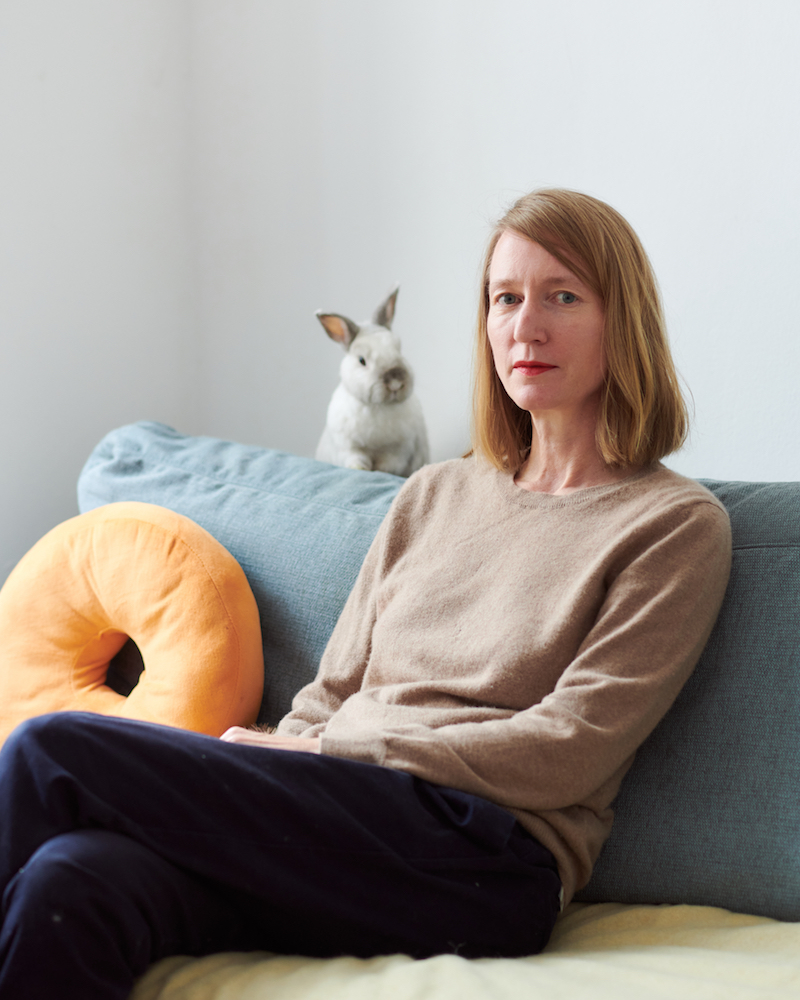
Aside from the bunnies, the studio is kept quite minimal. The walls are blank except for the one above the desk, where Nowak displays her drawings. They depict architectures that are marked by fences, hedges, walls and rails, very much like the hutch in the studio. The architectures are clean and straight, and so are the drawings: carefully executed, without smudges or mistakes. Yet, there is something unsettling about them. Maybe it is the colouring, the stage-like setting, or the surrounding void that makes them strange. They remind me of the street where I grew up in Belgium. Over time, the grass in front of the houses has been systematically replaced by gravel and the trees have been cut because fallen leaves are considered a nuisance. There are also bunnies in those gardens, but ones that are made of stone. Nowak seems to read my mind because she asks me if I know the social platform called “Belgian Solutions.”
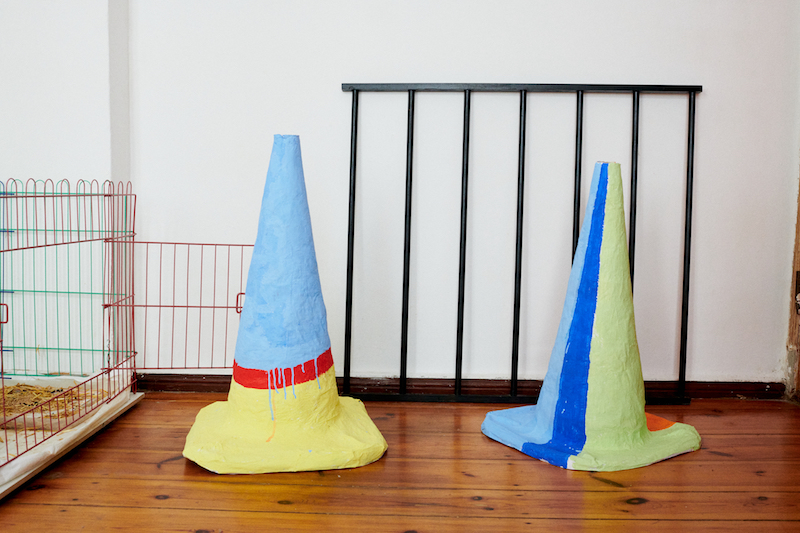
The drawings of architectures are a constant in Nowak’s work. They are usually the same size, an A2 format, and her favourite paper, Nowak reveals to me, is Hahnemühle (made in Germany, I read on its website, since 1584). When exhibiting these drawings, she often adds sculptural elements or turns them into installations. Currently, Nowak is showing an installation in public space entitled ‘Anders Wohnen’ (Living Differently) at Spindlersfeld in Köpenick, a neighbourhood in the south-east of Berlin. The work consists of three models of architecture that are used for living in, although it’s not their intended use: a construction trailer, a bungalow and a tent. They are made out of concrete and it was quite an adventure to make them at the workshop of bbk berlin. But now that Nowak got the hang of it, she is already thinking of what else she could pour into concrete.
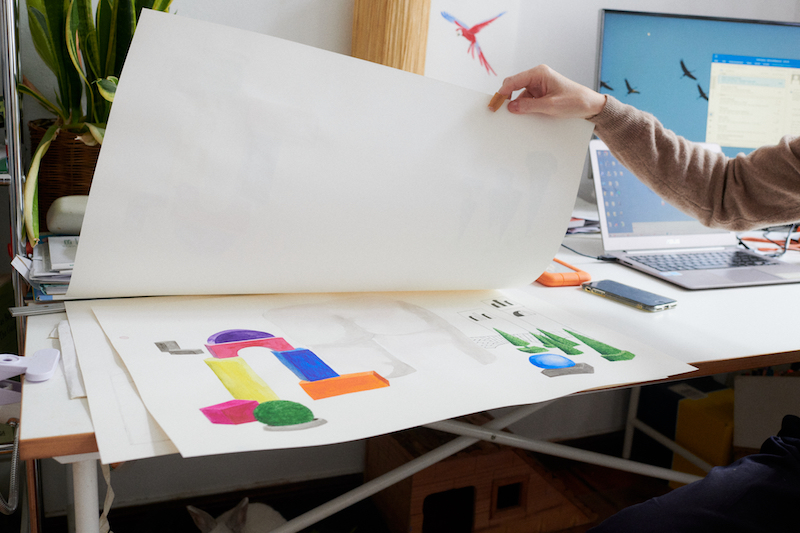
The idea for ‘Anders Wohnen’ came to Nowak upon visiting the location in Köpenick and being faced with the housing speculation going on in its immediate vicinity. During the process, she talked with several people—such as allotment gardeners, tent holidaymakers, houseless people and construction workers—about their experiences with these architectures. The interviews can be heard at the location, by scanning a QR code. Meanwhile, Nowak herself has been confronted with the increasing scarcity of living and working space in Berlin. Her home, where her studio is also located, has recently been purchased, and although no eviction notice has arrived yet, which would give her three months to move out, the constant threat is unnerving.
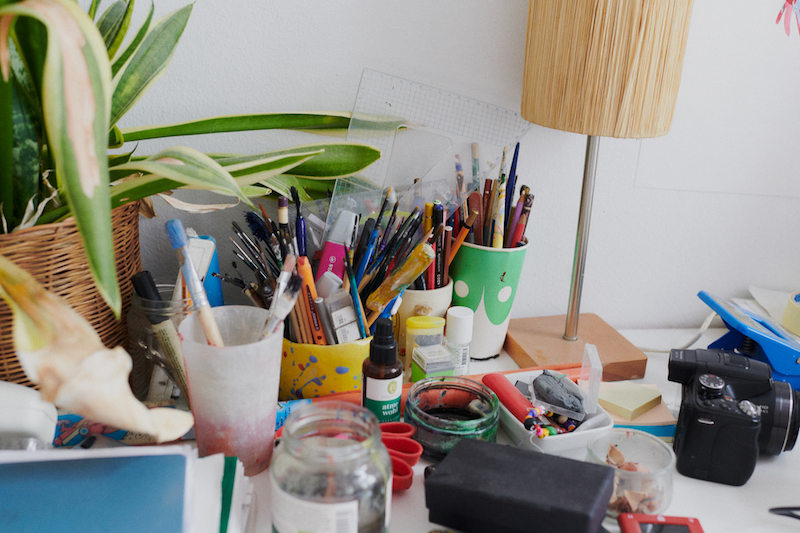
The mechanisms of inclusion and exclusion are an important thread in Nowak’s artistic research, present in the urban architectures that impose them, but also figuratively in spaces such as the art world. In 2022/23, the artist collaborated with an nGbK collective on the curation of the exhibition ‘Class Issues’ at the Berlinische Galerie. The topic didn’t come up during our studio visit but on my way out, Nowak gave me the exhibition booklet that talks about topics such as origin as obstacle, conditions of production and art market derangement. In photos I see that the exhibition started off with an equestrian fence, which, I suspect, might have been Nowak’s idea.
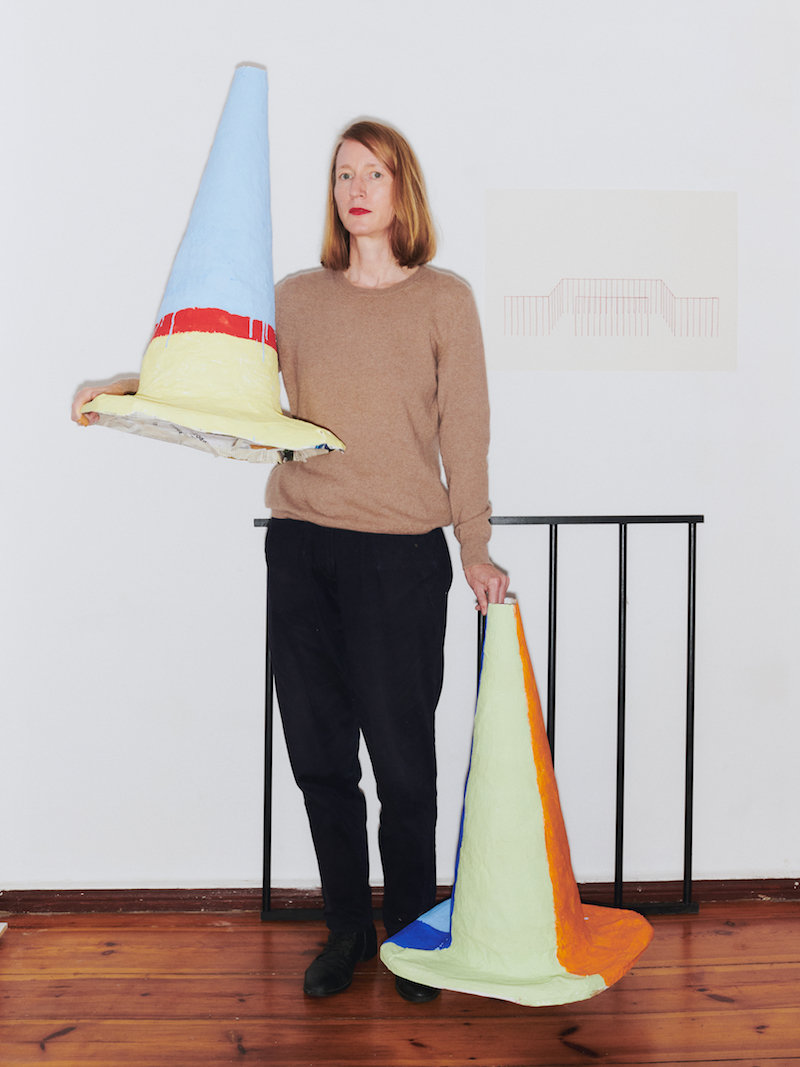
Some traffic cones in papier-mâché also decorate the entrance of her studio here at home. They indicate that work is in progress, but also talk about different levels of accessibility. Barriers also enter our conversation when we reminiscence about an exhibition series called ‘Secret Universe’ that took place a few years ago in Hamburger Bahnhof in Berlin. “Outsider art” is a term that Nowak doesn’t like. I seem to remember that the participating artists were all male, and therefore more susceptible to the outsider / genius label. It was also in Hamburger Bahnhof that I first got to know Nowak. We were both giving guided tours, and Nowak still does. We can get pretty excited talking about the pleasures of art mediation and how it has informed our own practices. “How did it influence your art?” I ask. “I definitely started making it easier to communicate about it,” she laughs.

Since our encounter at the museum, Nowak has brought me to many places in Berlin with her project space Schneeeule. The snow owl is apparently a very adaptable bird and so is Nowak’s art space. I remember going up somewhere north of Berlin to an abandoned solarium where there was a ghostly performance with banging doors. Afterwards, I had a green beer in the pub next- door. During the project space festival in 2022, Schneeeule took up residence at Cafe Finovo, at the entrance of an old cemetery in Schöneberg, weaving in its exhibition in a small and already packed space. And only a few weeks ago, Schneeeule showed at the outdoor Café Eule and the nearby “Vereinsheim” (club house) in the midst of the allotment gardens of Gleisdreieckpark. The art was partly exhibited on the stacked tables of the club. When curating in places that are not explicitly intended to show art, one has to go along with what is there, and Nowak always does so with such charm and finesse.
When I visited Schneeeule’s pop-up in Gleisdreieckpark, a guided tour for the seeing-impaired had just finished. But also, beyond the tour, some of the art in the exhibition could be touched, which is an unusual and exciting thing to experience. For Nowak, exhibiting in non-art spaces brings along the advantage of escaping the strict rules that normally have to be followed around art. I myself was accompanied by a little dachshund in the exhibition, who loudly showed his impatience about having to look at art in a place surrounded by a park. Because of the easy accessibility of these non-art spaces, Nowak’s exhibitions widen the audience for art. They also include a variety of artists, for example artists with and without disabilities exhibiting together. She does so without creating much fuss around it, by which it acquires a refreshing normality.
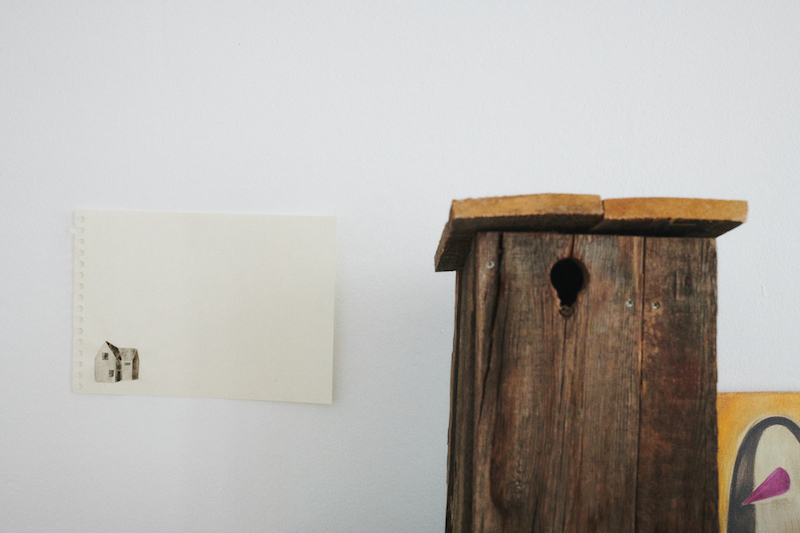
Both in her curating and art, Nowak warps spaces and the underlying power structures that define them. On her desk there is a wooden birdhouse that she made for an installation in various green patches in Berlin. The birdhouses, entitled ‘Raised Hides’ (2011), were not attached to trees, but stood on wooden stilts, a bit higher than usual, so that they have the appearance of surveillance cameras—perhaps a chance for birds to observe human activity? Animals also play the main role in the film ‘Leben auf dem Friedhof’ (Life at the Cemetery). While filming at the cemetery in Wedding, Nowak noticed how rabbits make their burrows in abandoned graves. As such, the old cemeteries in Berlin are an excellent place for observation of nature. Nowak’s favourite is the one in Bergmannstraße in Kreuzberg, near her studio.

At the moment, Nowak is working on a new film about birds. That means that she is out a lot, although, she says, it works better if you just put your camera on a tripod and let it roll. According to Nowak, the most interesting things happen when you are not watching. “When you then come home,” she laughs, “you look at what is filmed, and it’s like: yes!” As a child, Nowak’s father used to take her along to the forest to listen to birds. But she really got into it when suffering from tinnitus after a stressful period of work. The doctors advised her to listen to classical music and relax, but Nowak started listening to birds. For birdwatching, it is best is to wake up at 2 or 3am in order to be there when the morning breaks. I ask her if we are going to experience any sunrise in the film. She admits that we won’t: “I don’t wake up early,” she says, adding, with a characteristic Nowak-twist: “I’m not an early bird.”






















